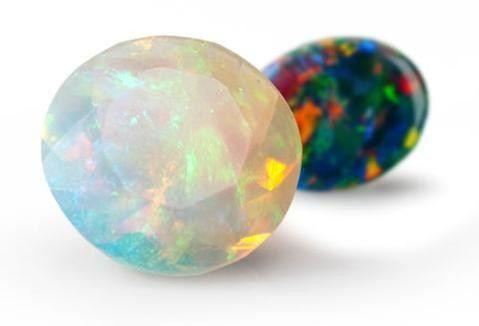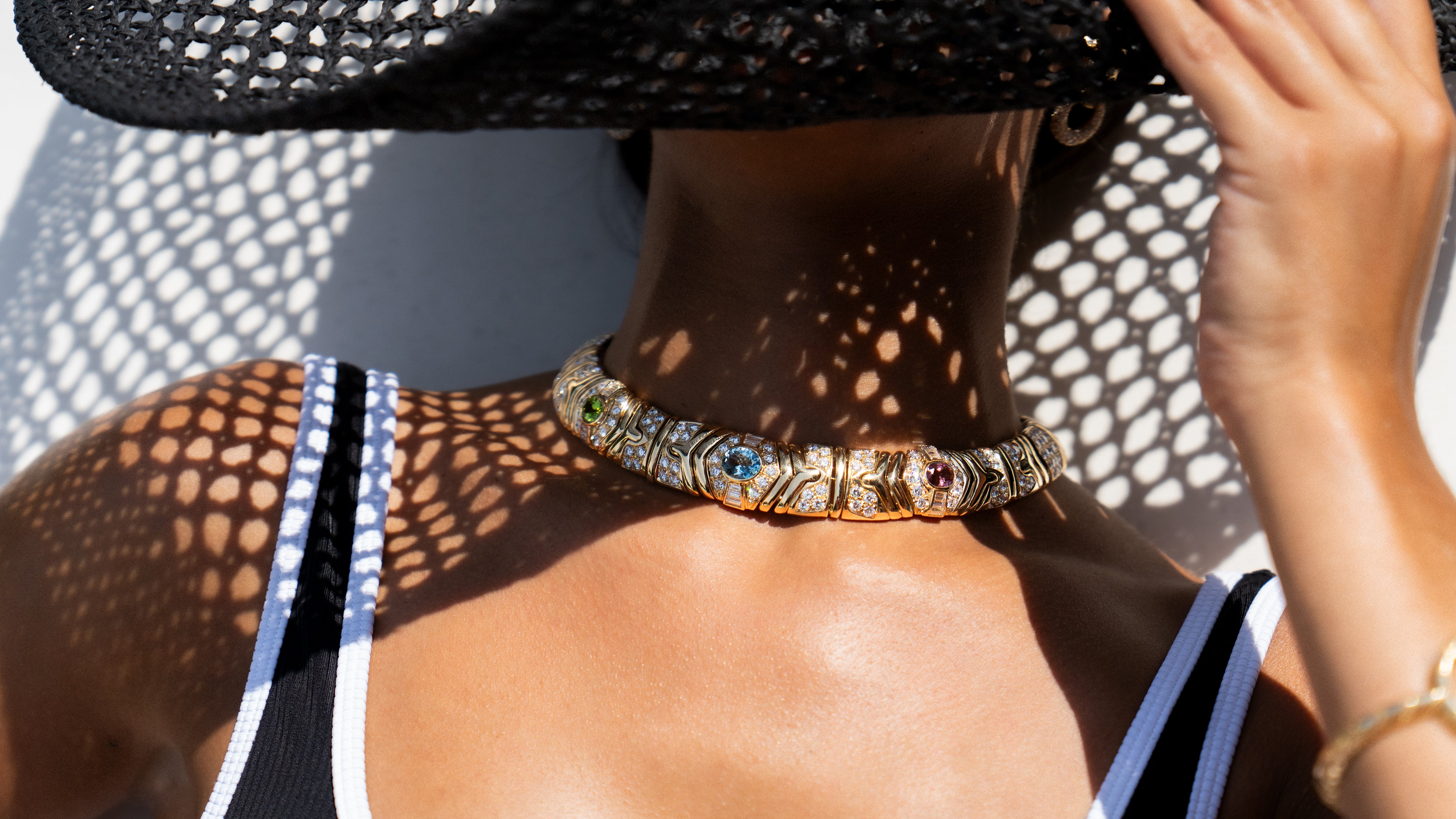Opal
Australia’s National Gemstone

Opal is technically not a mineral, but it is considered the hydrated amorphous form of the compound element silica. It forms when rainwater saturates the ground with underground deposits of silica. Then, hot arid weather follows the rainfall to rapidly dry the earth causing the silica deposits to harden and layer as tiny spheres.
This process curates opal's internal structure to resemble a child's ball pit and also causes the gem's famous play-of-color phenomenon. As light enters the stone it will be scattered amongst these spheres and be broken into spectral color.
Larger spheres absorb more light allowing for the color red to be displayed while the smallest spheres will display blue and violet. Red is a rarer color to display since larger silica spheres are less commonly formed. The rarest color combination is blue and red within the same stone since it would require both large and small spheres to form within the same stone.

Kinds of Opal
White opal is when the stone's body color is a transparent to translucent hazy white color. This variety is common and readily available.
Black opal is when the stone's body color is dark in hue. These specimens are typically acquired from Lightening Ridge Australia or Ethiopia.
Fire opal is tremendously unique as a transparent to translucent orangey-yellow to reddish-orange color - its hues alive like molten lava.
Boulder opal is another common variety where cutters choose to fashion a stone to depict both opal and its host rock as one polished stone.
Harlequin patterning is extremely rare and valuable. This is when an opal's play-of-color is organized in a checkerboard formation as large even patches.

In Jewelry
Opal is a relatively sensitive stone that should be worn with care. Cutters will fashion the stone either as inlay tablets or as a durable cabochon that fully displays fanciful play-of-color. When set in jewelry, opal is typically the focal point, but it will be protected as a bezel or cluster setting. Sometimes particularly transparent opals will be faceted to exude a soft playful glow.
It is the birthstone of October.
Learn how to care for opal jewelry
Care
Compositionally opals are 20% water and run the risk of crazing when they dry out. Opals love hydration and do not like to be stored in a dry environment near heat or with direct sunlight. Use a soft cloth to clean and be sure to wrap your opal jewelry when storing to prevent it from being scratched by harder stones like rubies and diamonds. As always, avoid harsh chemicals when wearing any kind of jewelry.
